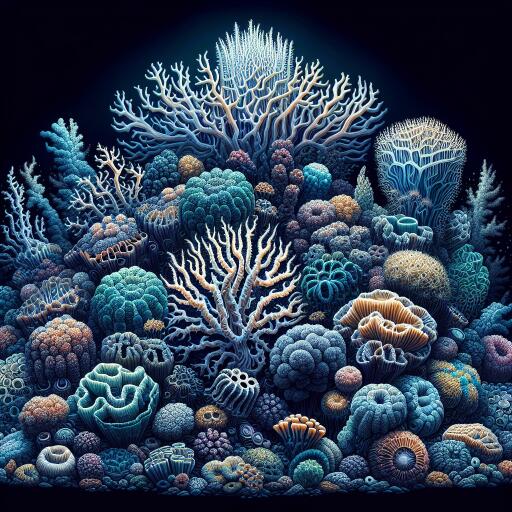
The Global Significance of Scleractinian Corals Without Photoendosymbiosis
Understanding the world of corals without photoendosymbiosis offers a deeper dive into the marine ecosystem’s complexity. This feature explores the significance of Scleractinian corals that either lack or have variable relationships with photoendosymbiotic organisms, shedding light on the intricacies of coral symbiosis, the evolution of scientific terminology, and the direction for future research.
Clarifying Terminology in Coral Symbiosis Research
The dialogue surrounding corals without traditional photosynthetic partners has been enriched by evolving scientific language. Historically, terms such as “azooxanthellate” dominated the literature to describe corals lacking symbiotic algae. However, as the field progressed, terminologies evolved to mirror the taxonomic shifts and newfound understandings of coral symbiosis. This resulted in the adoption of terms like “aphotoendosymbiotic” and “facultatively photoendosymbiotic” to more accurately depict corals’ relationships with their symbionts, or the lack thereof.
The transformation of terminology not only reflects the deepening of scientific understanding but also highlights the necessity for consistent language. This ensures clarity and facilitates global discourse on coral ecosystems, particularly those extending beyond the shallow, sunlight-rich waters into the mesophotic and deep-sea realms.
Exploring Scleractinian Coral Diversity and Research Trends
Investigations into Scleractinian corals devoid of photoendosymbionts reveal a rich tapestry of biodiversity across varying depths and habitats. Despite over 700 species being identified, research has only scratched the surface, with a significant portion of studies focusing on a narrow range of deep-sea corals. This uneven attention underscores the need for a broader exploration across all habitats, including shallow waters and mesophotic zones, to fully capture the ecological roles and evolutionary trajectories of these corals.
Global Research Efforts and Knowledge Gaps
The last five decades have seen an uptick in research surrounding corals that thrive without traditional symbiotic algae. Yet, this progress is marred by substantial gaps in our understanding, particularly in under-researched areas like shallow and cold waters. The scant focus on specific species and the predominance of research in the Northern Hemisphere highlight the need for a concerted global effort. This will pave the way for discoveries that could redefine our understanding of coral resilience and adaptation in the face of changing oceanic conditions.
Case Studies and Future Research Directions
Looking into the ecological niche of aphotoendosymbiotic and facultatively symbiotic corals in shallow, mesophotic, and deep-water habitats reveals a shared urgency for enhanced research. Limited studies on corals like Astrangia poculata, which display remarkable adaptability to varying environmental conditions, suggest that there’s much to learn about coral resilience and the potential for adaptation. Highlighting these case studies underscores significant research opportunities, particularly in exploring the impacts of climate change on these versatile marine organisms.
Emerging Themes in Coral Symbiosis Research
Recent explorations into the realm of coral symbiosis have illuminated the diverse interactions corals engage in beyond traditional photosynthesis-based relationships. From hosting a variety of microbial life to sustaining themselves through heterotrophy, corals exhibit remarkable ecological diversity. With ongoing environmental changes, understanding these complex symbiotic relationships becomes crucial, offering insights into coral survival strategies under stress.
Addressing Threats to Aphotoendosymbiotic Corals
The resilience of aphotoendosymbiotic corals to threats like ocean acidification and temperature changes hints at their potential to withstand certain impacts of climate change. However, the lack of comprehensive studies across a wider array of species and conditions points to an urgent need for in-depth research. Such efforts are vital to unravel the complexities of coral ecosystems and to devise strategies to preserve these keystones of marine biodiversity.
Conclusion
The exploration of Scleractinian corals without photoendosymbiosis opens new avenues for understanding marine ecosystems’ intricacies. By expanding research efforts, refining scientific terminologies, and addressing knowledge gaps, we can uncover the full ecological and evolutionary significance of these corals. As the marine environment faces unprecedented changes, unveiling the mysteries of these resilient marine inhabitants will be critical for conservation efforts and for fostering resilient oceanic ecosystems.





Leave a Reply